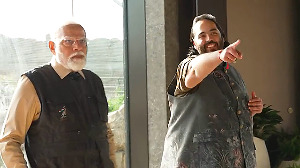Following are some of the key dates in Pakistan's political crisis:
March 9, 2007: President Pervez Musharraf removes Chief Justice Iftikhar Muhammad Chaudhry, sparking nationwide protests. Chaudhry reinstated by Supreme Court in July.
October 6, 2007: Parliament elects Musharraf as President for a fresh five-year term.
October 18, 2007: Former premier and Pakistan People's Party leader Benazir Bhutto returns from exile.
November 3, 2007: Musharraf imposes state of emergency and suspends Constitution. Judges of the Supreme Court, who were set to rule on the legality of his election, sacked.
November 25, 2007: Former premier Nawaz Sharif returns from exile.
November 28, 2007: Under domestic and international pressure, Musharraf doffs uniform, becomes a civilian president.
December 15, 2007: State of emergency lifted.
December 27, 2007: Benazir Bhutto assassinated during an election rally.
February 18, 2008: Landmark general elections bring Musharraf opponents PPP and PML-N of Nawaz Sharif to power.
March 24, 2008: Parliament elects Bhutto aide Yousuf Raza Gilani as prime minister.
August 7, 2008: Ruling coalition leaders announce plans to seek Musharraf's impeachment in parliament.
August 18, 2008: Musharraf announces resignation.
August 22, 2008: Pakistan's Election Commission announces that presidential elections will be held on September 6.
August 23, 2008: Asif Ali Zardari, PPP chief and widower of Benazir Bhutto, decides to stand for the presidency.
August 25, 2008: PML-N pulls out of the PPP-led alliance, accusing Zardari of reneging on promises to restore judges deposed during last year's emergency.
August 28, 2008: Pakistan's Election Commission accepts the nomination papers of Zardari, PML-N candidate Saeed-uz-Zaman Siddiqui and PML-Q leader Mushahid Hussain Sayed for the presidential polls, setting the stage for a triangular contest.
September 6, 2008: Zardari wins the presidential elections.






 © 2025
© 2025